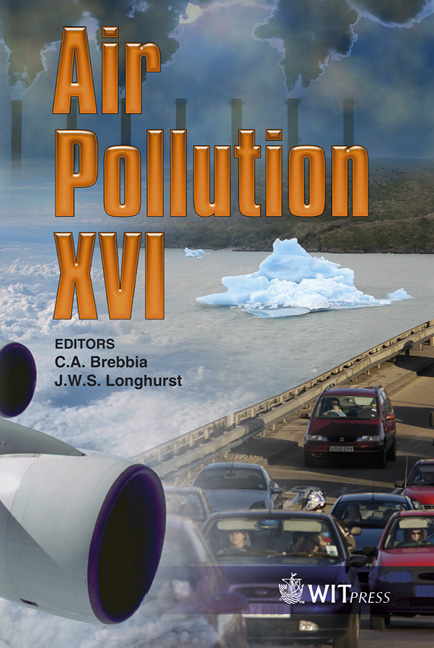Definition Of PM10 Emission Factors From Traffic: Use Of Tracers And Definition Of Background Concentration
Price
Free (open access)
Transaction
Volume
116
Pages
10
Page Range
57 - 66
Published
2008
Size
712 kb
Paper DOI
10.2495/AIR080071
Copyright
WIT Press
Author(s)
E. Brizio & G. Genon
Abstract
Within air quality management, one of the most important emission factors that should be known is PM10 (exhaust and non-exhaust flows) coming from traffic. The existing data and models produce very variable emission factors, also according to climate, sanding conditions, road material; thereby, a more general approach, based on the use of traffic tracer such as CO and NOx, can be put into practice in order to have a reliable assessment of PM emissions. Within the tracer approach, the definition of the background concentration of pollutants is of prime importance but representative measurements could be not at disposal. The present work is an attempt to define background concentration by considering the average concentration measured in an urban area during the night (0-5 am), when traffic and industrial instantaneous contribution are negligible and the heating plants are switched off. The so called \“night method” has been tested and validated by means of the OSPM model, an atmospheric dispersion model studied for street canyons, for CO and NOx. In the case of CO, the results were surprisingly satisfactory and the method could be considered consistent, whereas NOx turned out to be not reliable as a tracer because of the chemical reactions that occur in the troposphere. Keywords: traffic, air quality, atmospheric modelling, background concentration, OSPM, CO, PM10, NOx, tropospheric chemistry. 1 Introduction The air pollution situation of many European urban areas doesn’t present indications of substantial improvement, in spite of the adoption of specific policies of limitation and emission reduction; actually, these actions, without
Keywords
traffic, air quality, atmospheric modelling, background concentration, OSPM, CO, PM10, NOx, tropospheric chemistry.





